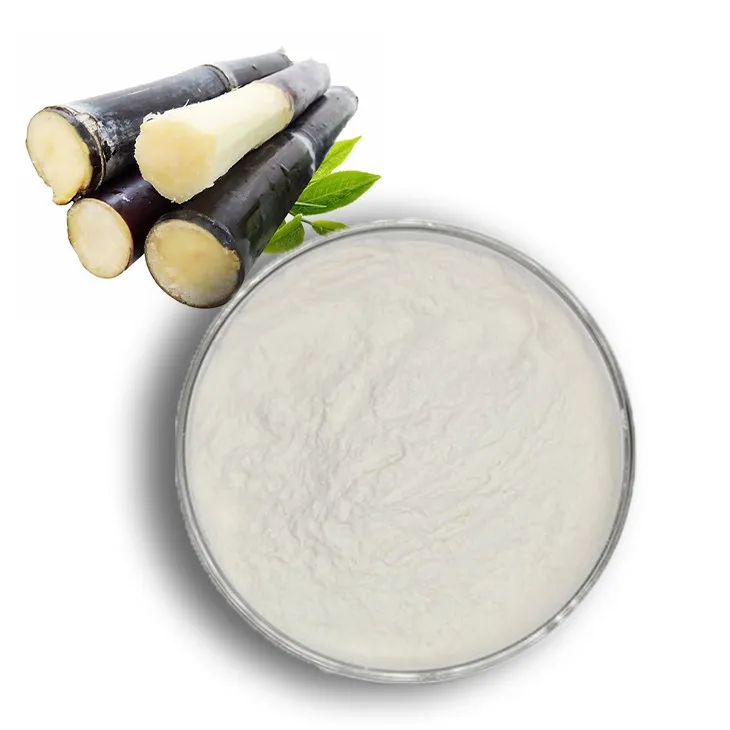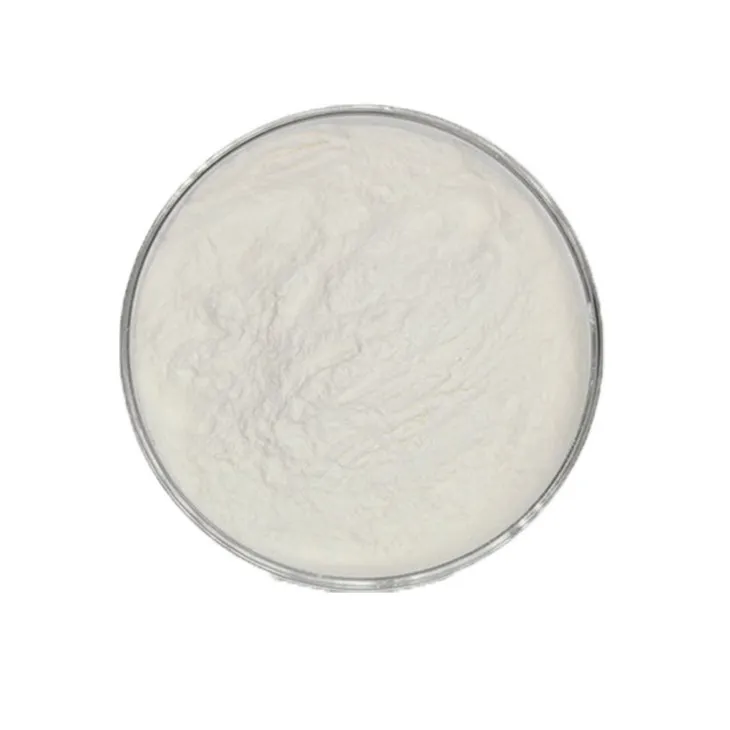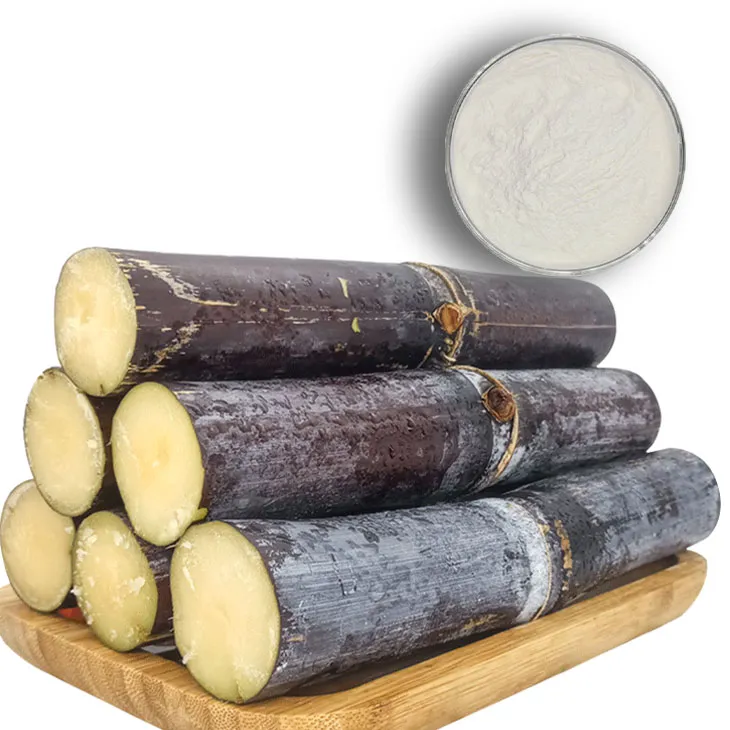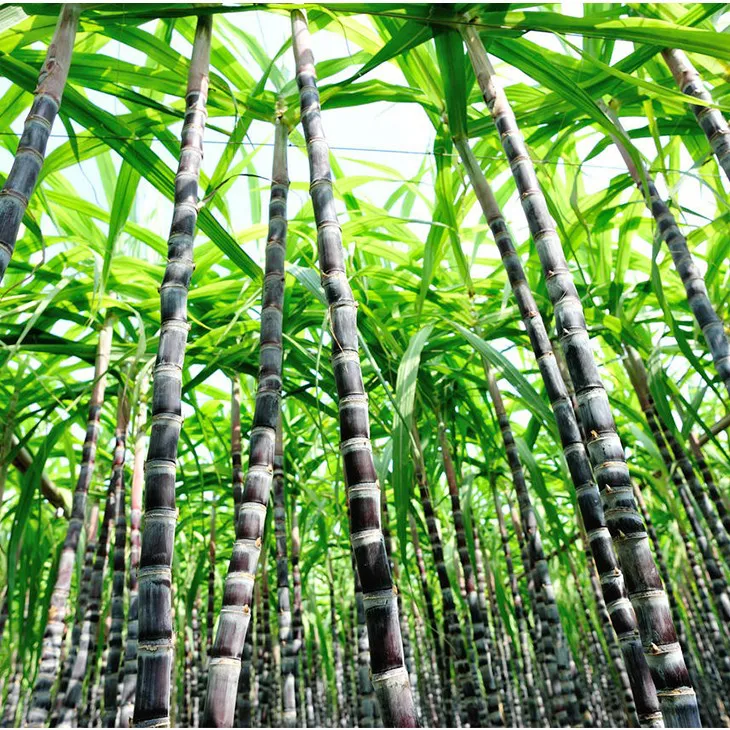- 0086-571-85302990
- sales@greenskybio.com
Extraction process of sugarcane extract.
2024-11-28

1. Introduction
Sugarcane Extract is a valuable substance with a wide range of applications in various industries such as food, beverage, and pharmaceuticals. The extraction process of cane extract is a multi - step procedure that aims to obtain a pure and concentrated form of the substances present in sugarcane. This article will delve into the details of this extraction process, exploring each step from the selection of raw materials to the final product.

2. Selection of Sugarcane
The quality of sugarcane is crucial for a successful extraction process. High - quality sugarcane should be selected, which typically has the following characteristics:
- Mature stalks: Mature sugarcane stalks contain a higher concentration of sucrose and other desirable substances.
- Healthy appearance: The stalks should be free from diseases, pests, and physical damage.
- Optimal variety: Different varieties of sugarcane may have different sugar contents and chemical compositions, so the appropriate variety needs to be chosen according to the intended use of the extract.

3. Cleaning of Sugarcane
After harvesting, the sugarcane needs to be thoroughly cleaned. This step is essential to ensure no contaminants are present in the subsequent extraction process. The cleaning process may involve:
- Removal of dirt and soil: Using water sprays or mechanical brushes to wash away the dirt and soil adhered to the surface of the sugarcane stalks.
- Elimination of debris: Picking out any leaves, twigs, or other debris that may be mixed with the sugarcane.

4. Crushing of Sugarcane
Crushing is a key step in the extraction of Sugarcane Extract. The main purpose of this step is to squeeze out the sap containing various substances. There are different methods and equipment for crushing sugarcane:
- Roller mills: Roller mills are commonly used in the sugarcane industry. They consist of multiple rollers that press the sugarcane stalks and extract the sap. The rollers can be adjusted to control the pressure and extraction efficiency.
- Diffusion process: In the diffusion process, the sugarcane is cut into small pieces and soaked in a solution. The sucrose and other substances in the sugarcane diffuse into the solution, which is then separated from the solid residue.

5. Enzymatic Treatment
Enzymatic treatment may be introduced at the crushing stage to improve the extraction efficiency. Enzymes can break down certain complex molecules in the sugarcane sap, making it easier to extract the desired substances. The following are some common enzymes used in the enzymatic treatment of Sugarcane Extract:
- Cellulase: Cellulase can break down cellulose, which is a major component of the cell walls in sugarcane. By breaking down cellulose, more of the intracellular substances can be released into the sap.
- Pectinase: Pectinase can hydrolyze pectin, which is another polysaccharide present in sugarcane. This helps to reduce the viscosity of the sap and improve the filtration efficiency in the subsequent steps.
6. Filtration of the Extract
After the enzymatic treatment (if applicable), the extract needs to be refined through filtration. Filtration is a crucial step to remove different - sized impurities from the extract. Multiple - stage filtration is often employed, which may include:
- Micro - filtration: Micro - filtration can remove relatively large particles such as cell debris and undissolved solids. The pore size of the micro - filtration membrane is typically in the range of 0.1 - 10 micrometers.
- Ultra - filtration: Ultra - filtration is used to separate smaller molecules and macromolecules. It can remove proteins, polysaccharides, and other substances with a molecular weight greater than a certain threshold. The pore size of the ultra - filtration membrane is usually in the range of 1 - 100 nanometers.
7. Heat or Chemical Treatment
In some cases, heat treatment or chemical treatment might be used to further process the sugarcane extract. These treatments can serve different purposes:
- Heat treatment: Heat treatment can be used to inactivate enzymes that may be present in the extract. This helps to stabilize the chemical composition of the extract. Additionally, heat treatment can also kill microorganisms, reducing the risk of spoilage.
- Chemical treatment: Chemical treatment may involve the addition of certain chemicals such as acids or alkalis to adjust the pH of the extract. This can affect the solubility and stability of the substances in the extract. For example, adding an acid can convert some of the sucrose into invert sugar, which may be desired in certain applications.
8. Concentration and Final Product
After the above - mentioned steps, the sugarcane extract may need to be concentrated to obtain a more concentrated form. Concentration can be achieved through methods such as evaporation or membrane concentration. The final product, the sugarcane extract, can then be used in different industries depending on its properties:
- Food industry: Sugarcane extract can be used as a sweetener, flavor enhancer, or ingredient in various food products such as beverages, confectionery, and baked goods.
- Beverage industry: It can be used to produce cane - based drinks, such as cane juice, or as an additive in other beverages to enhance the flavor and sweetness.
- Pharmaceutical industry: Some components of the sugarcane extract may have medicinal properties, such as antioxidant or anti - inflammatory effects, and can be used in the development of pharmaceuticals or nutraceuticals.
9. Conclusion
The extraction process of sugarcane extract is a complex yet well - organized procedure. Each step, from the selection of sugarcane to the final product, plays an important role in obtaining a high - quality extract. With the continuous development of technology, new methods and techniques may be introduced to further improve the extraction efficiency and the quality of the sugarcane extract, opening up more possibilities for its application in various industries.
FAQ:
What are the initial steps in the extraction process of cane extract?
The initial steps involve starting with high - quality sugarcane. After harvesting, the sugarcane is cleaned to remove any contaminants, and then it is crushed to squeeze out the sap which contains various substances.
Why is enzymatic treatment used during the extraction of cane extract?
Enzymatic treatment is used during the extraction of cane extract to break down certain complex molecules. This helps in achieving better extraction efficiency.
What types of filtration are used in refining the cane extract?
In refining the cane extract, multiple - stage filtration is used which can include micro - filtration and ultra - filtration. These help in removing different - sized impurities.
When are heat treatment or chemical treatment used in the cane extract extraction process?
Heat treatment or chemical treatment might be used in some cases to inactivate enzymes or microorganisms and to stabilize the extract during the cane extract extraction process.
What are the end - uses of the cane extract?
The resulting cane extract can be used in different industries depending on its properties.
Related literature
- Optimization of Sugarcane Extract Production: A Comprehensive Review"
- "The Science behind Sugarcane Extract Extraction and Its Applications"
- "Modern Techniques in Cane Extract Extraction and Refinement"
- ▶ Hesperidin
- ▶ citrus bioflavonoids
- ▶ plant extract
- ▶ lycopene
- ▶ Diosmin
- ▶ Grape seed extract
- ▶ Sea buckthorn Juice Powder
- ▶ Beetroot powder
- ▶ Hops Extract
- ▶ Artichoke Extract
- ▶ Reishi mushroom extract
- ▶ Astaxanthin
- ▶ Green Tea Extract
- ▶ Curcumin Extract
- ▶ Horse Chestnut Extract
- ▶ Other Problems
- ▶ Boswellia Serrata Extract
- ▶ Resveratrol Extract
- ▶ Marigold Extract
- ▶ Grape Leaf Extract
- ▶ blog3
- ▶ blog4
-
Manufacturers of Euphrasia Extract.
2024-11-28
-
Chinese peppermint oil powder factories.
2024-11-28
-
The best green tea extract on the market.
2024-11-28
-
Nature's Bounty Okra Extract.
2024-11-28
-
Chinese Oyster Peptide Powder Factories.
2024-11-28
-
The best organic L - carnitine.
2024-11-28
-
White mustard seed extract
2024-11-28
-
Genistein
2024-11-28
-
Aguaje Extract
2024-11-28
-
Alfalfa Meal
2024-11-28
-
Echinacea Extract
2024-11-28
-
Sophora Japonica Flower Extract
2024-11-28
-
Red Wine Extract
2024-11-28
-
Troxerutin
2024-11-28
-
Kidney Bean Extract
2024-11-28
-
Propolis Extract Powder
2024-11-28





















